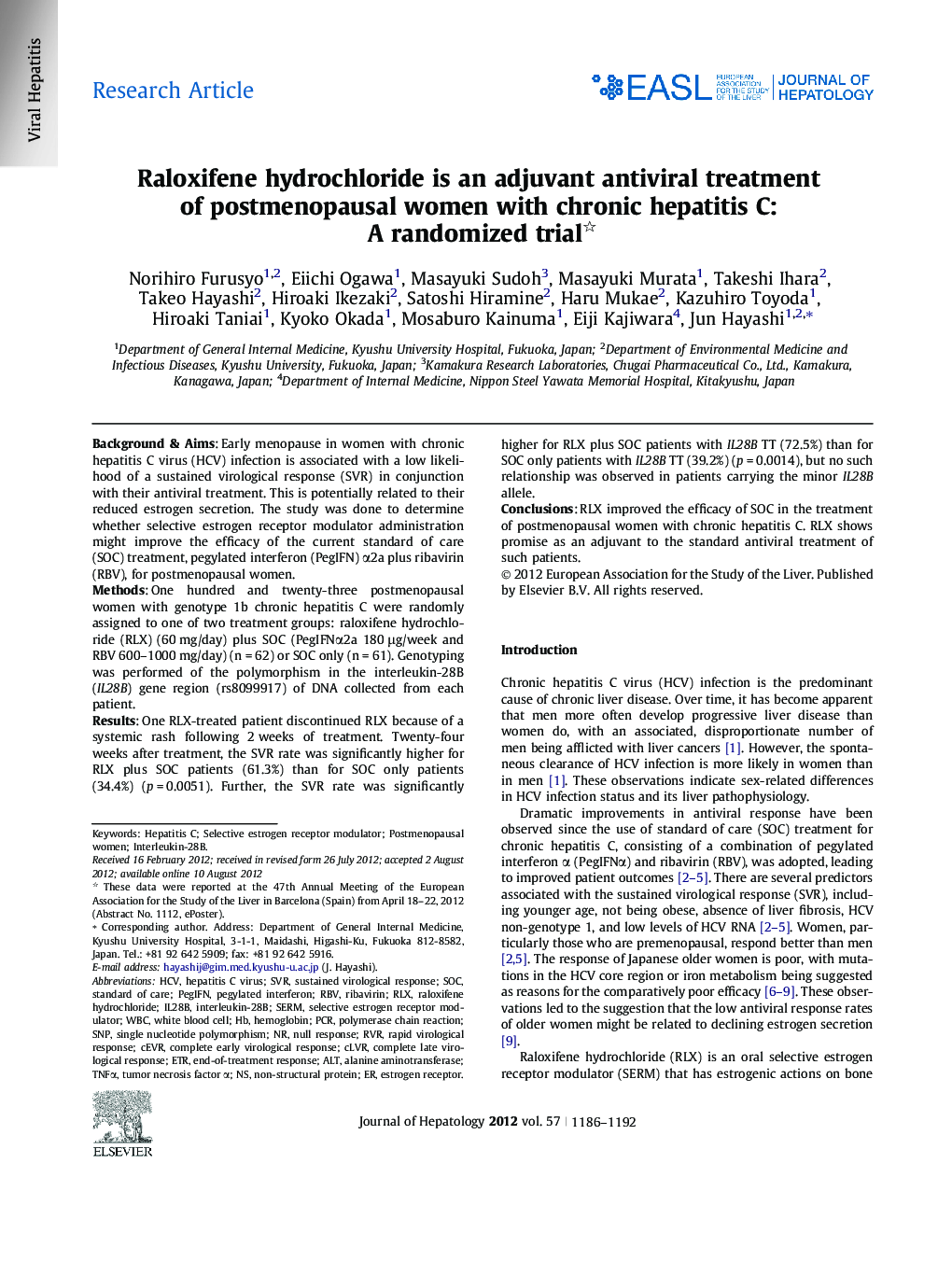| Article ID | Journal | Published Year | Pages | File Type |
|---|---|---|---|---|
| 6106194 | Journal of Hepatology | 2012 | 7 Pages |
Background & AimsEarly menopause in women with chronic hepatitis C virus (HCV) infection is associated with a low likelihood of a sustained virological response (SVR) in conjunction with their antiviral treatment. This is potentially related to their reduced estrogen secretion. The study was done to determine whether selective estrogen receptor modulator administration might improve the efficacy of the current standard of care (SOC) treatment, pegylated interferon (PegIFN) α2a plus ribavirin (RBV), for postmenopausal women.MethodsOne hundred and twenty-three postmenopausal women with genotype 1b chronic hepatitis C were randomly assigned to one of two treatment groups: raloxifene hydrochloride (RLX) (60 mg/day) plus SOC (PegIFNα2a 180 μg/week and RBV 600-1000 mg/day) (n = 62) or SOC only (n = 61). Genotyping was performed of the polymorphism in the interleukin-28B (IL28B) gene region (rs8099917) of DNA collected from each patient.ResultsOne RLX-treated patient discontinued RLX because of a systemic rash following 2 weeks of treatment. Twenty-four weeks after treatment, the SVR rate was significantly higher for RLX plus SOC patients (61.3%) than for SOC only patients (34.4%) (p = 0.0051). Further, the SVR rate was significantly higher for RLX plus SOC patients with IL28B TT (72.5%) than for SOC only patients with IL28B TT (39.2%) (p = 0.0014), but no such relationship was observed in patients carrying the minor IL28B allele.ConclusionsRLX improved the efficacy of SOC in the treatment of postmenopausal women with chronic hepatitis C. RLX shows promise as an adjuvant to the standard antiviral treatment of such patients.
